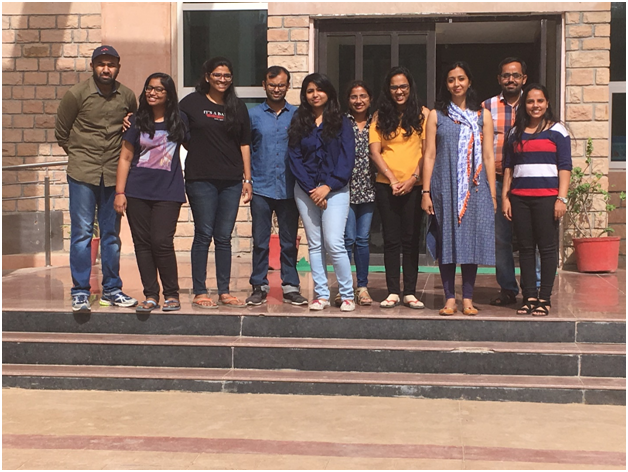Highlight Details
Research paper published by Dr. Sushmita Jha in Scientific Reports

Identification of markers for Deadly Brain tumor
A multi institute team, led by Dr. Sushmita Jha, Department of Bioscience and Bioengineering, IIT Jodhpur has identified new markers for a deadly brain tumour glioblastoma. In the paper published in the international journal Scientific Reports (Nature Publishing group), Dr Jha’s team used a multipronged approach utilizing 1) data from the cancer genome atlas, 2) experimental data generated from normal cells and brain tumour cells cultured in the laboratory and 3) experimental data generated from human brain tissue to identify novel biomarkers for glioma. Team members include Dr Sushmita Paul (Assistant Professor, Dept. of Bioscience and Bioengineering, IITJ), Dr Epari Sridhar (Department of Pathology, Tata Memorial Hospital, Mumbai, Maharashtra, India), PhD students (Dr Nidhi Sharma, Ms Shalini Singh, Ms Shivanjali Saxena, Mr Ishan Agrawal), and M.Tech students (Ms Varsha Srinivasan, Ms Swetha, Mr Arvind). This study was funded by the department of science and technology (DST) and department of biotechnology (DBT) government of India. This is the first report identifying NLRP12 as a candidate prognostic marker for glioma progression leading the way for designing future therapeutic strategies
Background
Gliomas are the most prevalent intracranial tumours accounting for 80% of primary malignant brain tumors. Based on the degree of malignancy, gliomas are classified into low and high grade. Low grade glioma (LGG) specifically represents 40% of all central nervous system tumors in children. High-grade gliomas (glioblastomas) account for 59.5% of CNS tumors in India. Even after surgery, chemotherapy and radiotherapy the median survival is less than 14 months. Gliomas are tumors arising from glial cells. Glial cells constitute approximately 90% of the human brain. They are responsible for maintenance, immunity and repair. The recalcitrance of Glioblastomas (GBM) results from their ability to form new blood vessels via angiogenesis and tumor heterogeneity. The highly infiltrative behavior of GBM makes surgery nearly ineffective, since tumor cells and glioblastoma stem cells colonize the surrounding brain tissue causing relapses even at distant brain sites.
The nucleotide-binding domain, and leucine-rich repeat containing receptors (NLRs) and absent-in-melanoma 2 (AIM2) are innate immune receptors crucial for initiation and progression of several cancers. There is a dearth of reports linking NLRs and AIM2 to glioma pathology. We used a data-driven approach to identify NLRs, AIM2 and NLR-associated gene expression and methylation patterns in low grade glioma and glioblastoma, using The Cancer Genome Atlas (TCGA) patient datasets. Since TCGA data is obtained from tumor tissue, comprising of multiple cell populations including glioma cells, endothelial cells and tumor-associated microglia/macrophages we carried out cell culture experiments and immunohistochemistry on human brain tissue to identify cell specific effects. TCGA data mining showed significant differential NLR regulation and strong correlation with survival in different grades of glioma. We report differential expression and methylation of NLRs in glioma, followed by NLRP12 identification as a candidate prognostic marker for glioma progression. In the normal brain cells known as microglia function as immune cells. We found that Nlrp12 deficient microglia show increased colony formation while Nlrp12 deficient glioma cells show decreased cellular proliferation. Immunohistochemistry of human glioma tissue shows increased NLRP12 expression. Interestingly, microglia show reduced migration towards Nlrp12 deficient glioma cells.
The most significant part of the work is identification of the protein NLRP12 that is involved in the normal immune response when absent in microglia leads to aberrant cellular proliferation. Moreover, this protein is shown to be highly expressed in tumour cells. Future studies from our group are aimed at understanding the molecular signaling pathways. This may allow for development of targeted therapeutics and increased survival.












